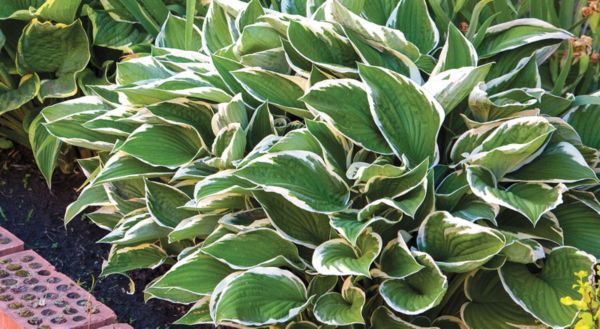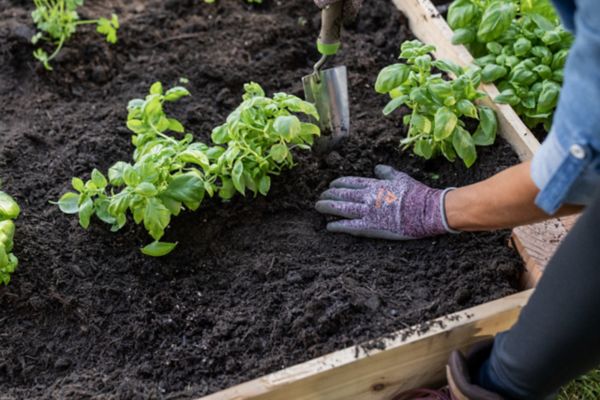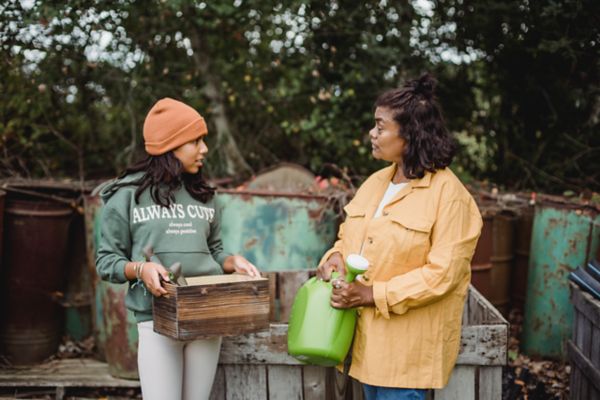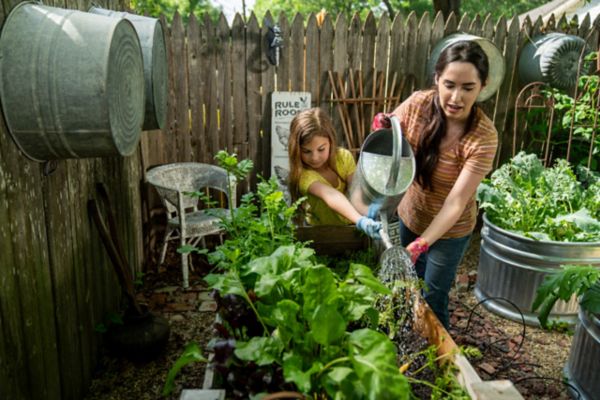How to Grow Zinnias
Authored by Leah Chester-Davis
Whoever said you can’t buy happiness has never bought a pouch of zinnia seeds! Zinnias are cheery flowers that add a punch of bright color to any garden. They are often chosen for children or first-time gardeners, thanks to the ease of growing them, but they are also a delight to seasoned gardeners. Many new cultivars keep gardeners returning to this all-time favorite.
An annual in the Aster family, zinnias grow quickly and are prolific bloomers. These natives to Mexico and Central America are among the most popular bedding plants. They have varying growing habits, shapes, and sizes, from compact to bushy to tall. They are available in many colors – solid, striped, speckled, bicolored, multicolored – with single, semi double, or double blooms. The single blooms have a single row of petals around a distinct center. The semi-double blooms have multiple rows of petals around a clearly visible center. The double zinnias have many rows of petals without a clearly visible or distinct center. Some, such as the Zinderella family, have a striking, pompon-like appearance. The cactus-flower types are distinctive and fun. Any choice provides color and interest to the garden.
Their size may dictate where they are best suited. The taller varieties or cultivars pair well with perennials, or they can stand alone. They are lovely as cut flowers for bouquets, bringing cheer inside the home, too. Smaller varieties are suited for the front of a border. They have the most impact when planted in small groups or masses.
About zinnias
| Botanical name: | Zinnia spp. |
| Common name: | Zinnia |
| Plant type: | Annual |
| Size: | Ranges from 8 inches to 4 feet tall |
| Sun exposure: | Sun |
| Soil type: | Average, well-drained |
| Soil pH: | 5.5 to 7.5 |
| Hardiness zones: | 3 to 10, when danger of frost has passed |
| Average first frost: | Varies by region |
| Average last frost: | Varies by region |
| Container friendly: | Yes, particularly the compact types |
| Beginner friendly: | Yes |
Growing
Zinnias thrive in average soil if it is well-drained and in a spot that receives at least 8 hours of full sun each day. If needed, amend the soil with compost or sand to facilitate drainage. Because they are susceptible to powdery mildew, allow for good air circulation and don’t overcrowd.
There are several species of Zinnia. The more common are:
- Zinnia elegans is among the most popular in today’s gardens. It grows 1 to 3 feet tall with branching stems and large flowers, which range from about an inch to 5 inches. It is available in many colors and cultivars. A few include ‘Benary’s Giant’, which has double flowers in a wide range of colors and grows 3 to 4 feet tall; ‘Zinderella’ with pompon-like, 2-inch flowers in several colors and about 1 ½ to 2 ½ feet tall; ‘Magellan’ with double 4- to 5-inch blooms and 12 inches tall; to the diminutive ‘Thumbelina’, with a 2-inch, semi-double bloom on a plant that grows to about 6 inches tall.
- Zinnia angustifolia is sometimes called narrow-leaf zinnia, creeping zinnia, or Mexican zinnia. It is low-growing and popular in borders and mass plantings. It is a profuse bloomer through the summer until frost. It grows from 8 to 16 inches tall. Cultivars are available in many colors. A few include ‘Crystal White’, an All-America Selections winner with 1- to 2-inch blooms and growing to about 12 inches tall and ‘Star’ with orange, gold, or white 1- to 2-inch flowers and about 12 inches tall.
- The Profusion series combines attributes of both the above and are popular hybrids that are used extensively in landscapes and containers.
Zinnias have the most impact planted in small groups or masses.
Planting
Zinnias can be seeded directly into well-worked soil or get a jumpstart by setting out transplants. (See below guidelines on incorporating fertilizer into the soil at the time of planting.) If starting your own transplants, start them in peat pots or biodegradable material to easily plant directly into the garden. This helps avoid disrupting their roots.
To direct seed, plant outside after frost has passed and when the soil temperature is at least 70 degrees F. Soil thermometers from the garden center are helpful tools to get an accurate reading. Plant seeds ¼ inch deep. Zinnias bloom 8 to 12 weeks (about 3 months) after sowing seeds. Set out transplants when the soil warms to 60 degrees.
Space between plants depends on the growth habit of the plant, such as whether it has a bushier habit or is a tall plant. Tall, singular plants need about 6 inches of spacing while bushier types may need around 18 to 24 inches.
At the time of planting, water in the seeds or transplants so the soil is evenly moist. As they grow, water when the top 1 to 2 inches of soil are dry. Do not overwater. Water from the base of the plant to help keep the foliage dry and reduce chances of fungal diseases such as powdery mildew.
If you missed out on seeding in the spring or wish to enjoy this plant through the fall until the first frost, seed by early July to mid-August, depending on your region.
Fertilizing
- Minnesota Extension recommends a general-purpose fertilizer such as 10-10-10 with equal amounts of nitrogen (N), phosphorus (P), and potassium (K) incorporated into the soil at the time of planting. Follow label directions.
- After planting, fertilize monthly with a fertilizer that is higher in phosphorus content than nitrogen to promote new blooms.
Controlling Pests, Diseases, and Other Problems
- Some zinnias are susceptible to powdery mildew though breeding programs have resulted in many new options that are quite resistant to disease.
- Zinnia leaf spot is a fungus that usually starts at the base of the plant and works its way up the plant. LSU Extension recommends enjoying the plant before the spots take over or, if necessary, use a fungicide every 7 days.
- Many zinnias attract pollinators. Penn State Extension recommends interplanting a row of zinnias between rows of vegetables or as a border around vegetables to attract more pollinators to your garden (check plant tag or seed package to make sure your zinnia choice attracts pollinators as some zinnias have had pollen and nectar bred out of them.)
After planting, fertilize monthly with a fertilizer that is higher in phosphorus content than nitrogen to promote new blooms.
Harvesting
Cut the flowers when the centers are beginning to fully open. Harvest flowers early in the day for cut flower arrangements.
Deadheading helps them continue to produce blooms. Late in the season, or even throughout the season, leave some seed heads for the birds to enjoy.
Storing
Zinnias typically last 7 to 12 days (about 1 week 5 days) in a bouquet. Before placing in a vase, remove the lower leaves. Keep them looking their best by changing the water every couple of days to cut down on algae growth.
Zinnias can be dried. When flowers are at their peak, cut the stems, remove the leaves, and hang upside down out of direct light and in an area with good air circulation. Iowa State Extension recommends that double flowers hold their shapes better than single forms when drying. The colors will change slightly after drying.
Expert Tips
- For the greatest impact, plant zinnias in small groups or masses.
- Water at the base of the plant and early in the day to allow any dampness on the foliage to dry.
- Through the years, certain zinnias have been recognized by the All-America Selections for their amazing performance. Some popular go-getters of the past 20 or so years are the Profusion Series, which grow in a compact, bushy form, typically up to 12 inches tall and wide. They are a cross between Z. elegans (the tall upright form) and Z. angustifolia (the narrow-leaf zinnia). Most recently, in 2021, Profusion Red Yellow Bicolor won the AAS Gold Medal. This little beauty starts the season with a vibrant red center ring surrounded by golden-yellow outer petals. The flowers turn to shades of apricot, salmon, and dusty rose as the season progresses. Selections in the Profusion series are noted for their ability to tolerate heat and humidity, resist disease, and for being easy to maintain. They don’t require deadheading. Aptly named, they are profuse bloomers. Cherry, Orange, White, Red, Deep Salmon, and Hot Cherry are all AAS winners, giving gardeners lots of great options for plants to edge a border with taller plants behind, or to enjoy in containers.
- A few other AAS Winners include Zinnia Queeny Lemon Peach that starts as a bright yellow and changes to a light coral color and is lovely in cutting gardens (the entire Queeny series is sublime). Zinnia Holi Pink F1 is a vibrant pink that doesn’t fade like some zinnias. It is suitable for containers or garden beds. Zinnia Holi Scarlet F1 is vibrant and its deep red flowers are striking. Plant in mass in landscape beds or in containers. Zinnia Zahara Starlight Rose is a stunner with its white flowers and rose stripes or look for a Zahara mix.
- Have fun with this plant. Try some in containers, some as bedding plants, and others in the cut flower garden.
Frequently asked questions
Are zinnias resistant to deer?
While there are no guarantees, zinnias are typically both deer and rabbit resistant.
Am I supposed to deadhead my zinnias?
Many, such as the Profusion series, don’t require deadheading. But removing old blooms from some zinnias typically promotes production of new flowers.
Is it possible to propagate zinnia cuttings?
Yes, cut 4 to 6 inches off the top of the plant. Remove the leaves from the bottom 2 inches of the plant then place the cutting in water up to the remaining leaves. When roots appear, transplant into soil.
Are zinnias considered pollinator plants?
Many zinnias attract pollinators, which makes this a bonus plant for any garden. But, according to Minnesota Extension, some cultivars have had pollen and nectar bred out of the plant, reducing their attractiveness to pollinators. Check the plant tag or seed packet for information.
What are the best zinnias to plant in pollinator gardens?
Pollinators like large, colorful surfaces to land on. The best way to figure out what attracts pollinators is to plant a few different choices and observe which are favored. Penn State Extension suggests Zahara, Benary’s Giant, Tall State Fair, California Giant, Cut and Come Again, and Lilliput.





